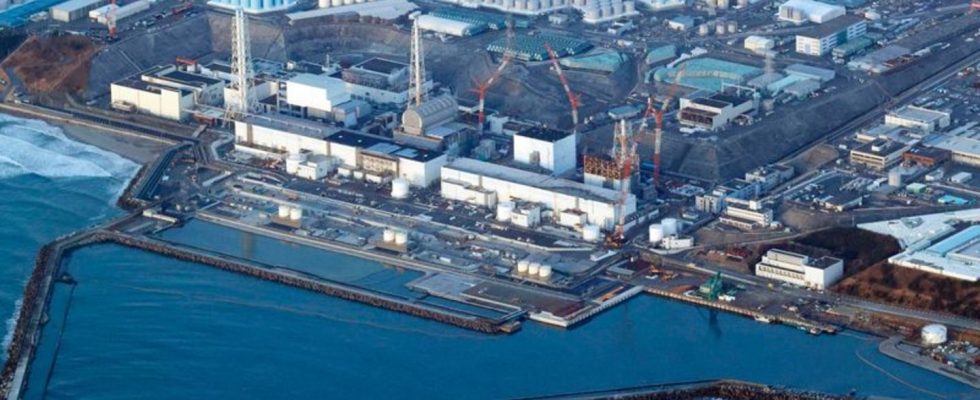nuclear ruin
Disposal of Fukushima cooling water remains controversial
The water currently stored in more than 1,000 tanks on the railings of the Fukushima nuclear ruins is “not normal cooling water from a functioning nuclear power plant,” criticizes the Citizens’ Nuclear Information Center. The IAEA sees no concerns. photo
© Shohei Miyano/Kyodo News/AP/dpa
The disposal of the cooling water from the nuclear ruins in Fukushima, Japan, is getting closer. But despite the plan’s endorsement by the International Atomic Energy Agency, concerns remain.
Japan’s plan to dump contaminated cooling water from the Fukushima nuclear ruins in the sea continue to face resistance and concerns even after approval by the International Atomic Energy Agency (IAEA).
Fishing cooperatives in the three neighboring prefectures of Fukushima, Miyagi and Iwate want to petition the central government and the operator of the damaged Fukushima Daiichi nuclear power plant this week, speaking out against the dumping. Regardless, the government is preparing for disposal, which could begin in August, according to the Japanese business daily Nihon Keizai Shimbun.
The day before, IAEA chief Rafael Grossi had given Japan the green light for the planned disposal of huge amounts of filtered cooling water in the sea. Japan’s plan meets international safety standards. The effects on people and the environment are “negligible”. On Wednesday, Grossi attended a meeting of government officials with heads of local authorities in Fukushima. Given the continued concern, he assured that the IAEA would remain on the ground until all the water was safely discharged into the sea.
“Water used to cool molten nuclear fuel”
The IAEA and other experts point out that it is common practice worldwide for nuclear power plants to discharge contaminated cooling water into the sea. “This is a completely different situation,” contradicted Caitlin Stronell from the Citizens’ Nuclear Information Center in Tokyo to the German Press Agency.
The water currently stored in more than 1,000 tanks is “not normal cooling water from a functioning nuclear power plant,” says Stronell. “It’s water used to cool molten nuclear fuel, the result of one of the world’s worst nuclear accidents.” Instead of taking responsibility and solving the problem at home, operator Tepco and the Japanese government wanted to flush the contaminated water into the Pacific. One lesson learned from the Fukushima nuclear accident was “that there is no such thing as ‘no risk’,” Stronell said. “The health risks of exposure to radiation are never zero”.
South Korea wants to respect IAEA report
While China, in response to the IAEA test report, asked Japan not to discharge the cooling water from Fukushima into the sea, South Korea said it respected the report. The IAEA is an internationally recognized agency, Park Ku Yeon, deputy head of the South Korean government policy coordination office, told journalists in Seoul. At the same time, Park announced that the results of South Korea’s own analysis of its disposal plans would be presented as soon as possible.
South Korea had sent a larger group of experts to the neighboring country in May. The plans have also raised concerns in South Korea. The government has so far emphasized that it intends to stick to the import ban on fishery products from Fukushima and the surrounding area as long as concerns about possible environmental damage are not dispelled. IAEA chief Grossi travels to Seoul on Friday.
Preparations for cooling water discharge almost complete
Meanwhile, Japan’s nuclear regulatory agency will issue a certificate of completion showing that the pre-inspection of the treated water discharge system has passed, media said on Friday. This would then complete all preparations for discharging the previously filtered and diluted water through a one kilometer long tunnel dug into the sea for this purpose.
In 2011, an earthquake and tsunami caused a core meltdown at the Fukushima Daiichi nuclear power plant. The destroyed reactors still have to be cooled with water stored in tanks. There are now more than 1.3 million tons stored there. According to Tepco, the space is now running out. Before dumping, the water is treated. The system can filter out 62 nuclides – but not tritium. Tepco wants to dilute the water to such an extent that the tritium concentration drops to around 1,500 becquerels per liter, which is less than a fortieth of the national safety standard. There is therefore no risk.

